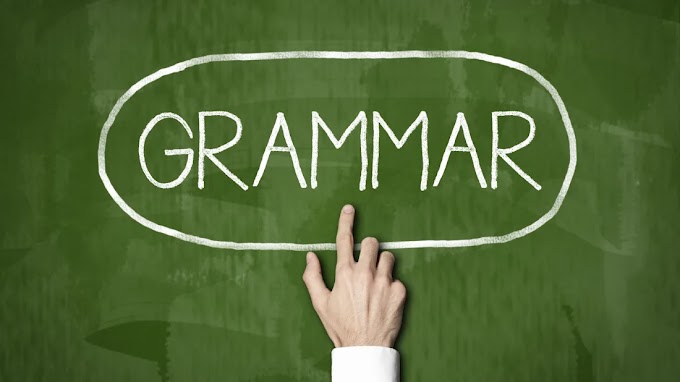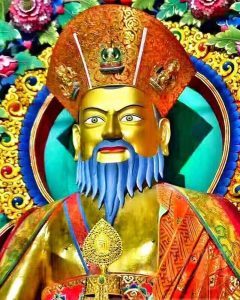CHAPTER
5
The
International Organizations and Bhutan
In the era of globalization, it is important
to understand Bhutan’s place in international arena hence we will look at the
three important organization- UNO, SAARC and NAM UNO
1.United Nations Organization
·
Second
World War was disastrous all over the world.
·
There
were heavy losses of human life and wealth.
Therefore, to avoid such trolls, the world came forward to discuss the establishment
of UNO.
·
The
Charter of UNO was signed on 26th
June 194
·
UNO
replaced the League of Nations.
·
UNO was
first envisaged by Franklin D.
Roosevelt, President of USA.
·
26
Nations pledged together to fight against the Axis Powers (Italy, Germany and
Japan).
·
The
representatives of 50 countries attended UN Conference at San Francisco from 25th
April to 26th June 1945; they signed the Charter on 26th
June 1945.
·
Poland
signed the Charter later; therefore, there are 51 original member states in
UNO.
·
UNO was
officially accepted on 24th October 1945 by China, France, Soviet
Government (Russia), UK and USA.
Therefore, 24th
October is celebrated as UN Day.
United
Nations Charter:
·
It is
the main instrument of UNO which reflects the rights and obligation of the
member states and the organs and the procedure of the organization.
·
The
Charter opens with a preamble, and includes sections on United Nations Purposes
and Principles, Membership, organs, Peaceful settlement of disputes,
Aggression, international Economic Cooperation, and Non Self Governing
Territories
Purposes and Principles of UNO
Purposes
of United Nations Organization:
·
To
maintain international peace and security.
·
To
develop friendly relations among the Nations.
·
To
solve International problems.
·
To be a
centre of harmonizing the actions of Nations.
i)
Principle of UNO:
ü Equality in members.
ü Good faith in Charter.
ü To settle International disputes by peaceful
means.
ü Refrain from use of force against other
states.
ü To give assistance.
ü To ensure other states to follow the UN
principles.
ü Not to intervene in the domestic matters of
any state.
Membership
to the UNO:
o
Its
membership is open to all those who are peace loving nations and willing to
accept the obligations of the Charter.
o
New
Member States are admitted by the General Assembly on the recommendation of the
Security council.
Official
Languages of the UNO:
o
Chinese,
English, French, Russian, Spanish and Arabic had been added as an official
language of the General Assembly, the Security Council and the Economic and
Social Council.
Six Principle Organs of UNO:
o
General
Assembly.
o
Security
Council.
o
Economic
and Social Council.
o
Trusteeship
Council.
o
International
Court of Justice.
o
Secretariat:
1.General Assembly
ü
It is
the main organ of UNO.
ü
All the
member states of UNO are the members of General Assembly.
ü
They
have one vote.
ü
To make
an important decision of peace and security, 2/3rd majority is
taken.
ü Other issues are decided with a simple majority.
Functions
and Powers of General Assembly:
ü To recommend on international peace and
security to the Security Council.
ü To discuss the powers and functions of other
organs.
ü To recommend the development of international
laws.
ü To consider reports from other organs of UNO.
ü To approve the UN budget.
ü To elect the nonpermanent members of Security
Council.
ü To elect the members of Economic and Social
Council.
ü To elect the Judges of International Court of
Justice jointly with Security Council.
ü To appoint Secretary General on the
recommendation of Security Council.
ii.Security
Council:
ü
It is
composed of 15 members.
ü
Five
are permanent members and ten are nonpermanent members for two years.
ü
Nonpermanent
members are elected by General Assembly.
ü
Five
permanent members are China, France, Russia, UK and USA.
ü
Each
member has one vote.
ü
Discussions
are made by 9/15 members.
ü Permanent members can cast a negative vote
because they have veto power.
Functions
and powers of Security Council:
ü To maintain international peace and security.
ü To investigate disputes.
ü To recommend ways to solve disputes.
ü To regulate armaments.
ü To take military actions on aggressor.
ü To recommend the admission of new members.
ü To recommend General Assembly to appoint
Secretary General.
ü To elect Judges jointly with General Assembly.
iii.Economic
and Social Council:
·
It is
principle organ of UNO.
·
It has
54 members for three years.
·
Each
has one vote.
·
Decision
is done by simple majority.
Functions and Powers of Economic and Social Council:
ü To discuss economic and social issues.
ü To promote human rights and fundamental
freedoms.
ü To call International Conferences and to
prepare draft and to submit to the General Assembly.
ü To coordinate activities.
iv.Trusteeship
Council:
ü It is the main organ of UNO.
ü It has got 11 original trust territories.
ü The five permanent members of Security Council
are the members of Trusteeship Council.
ü Trusteeship Council looks after the
independence of trust territories, political, economic, social and educational
advancement of trust territories.
v.International
Court of Justice:
ü It is the principle judicial organ of UNO.
ü It is at Hague, the Netherlands.
ü All the members of UNO are the member of
International Court of Justice.
ü Two non-members are Switzerland and Nauru.
ü General Assembly and Security Council can ask
advice and legal questions to International Court of Justice.
ü The jurisdiction of the court covers all
matters referred by the states.
ü It consists of 15 Judges.
ü Judges are elected by General Assembly and
Security Council.
ü Judges are chosen based on qualification and
not on the nationality.
ü No two Judges can be from same states.
ü The term of Judges is for 9 years.
ü They can be reelected.
ü They cannot have any other occupation.
vi.Secretariat:
ü It carries out day to day work of UNO.
ü It is headed by Secretary General.
ü
A
Secretary General is appointed by General Assembly on the recommendation of
Security Council for 5 years.
Functions
of Secretariat are as follows:
a)
To
mediate International disputes.
b)
To
carryout surveys on economic and social problems.
c)
To
organize International Conferences.
d)
To
translate documents into official languages.
ü
There
are 14,000 men and women from 170 countries.
ü
The
members take an oath not to seek or receive instructions from outside.
Secretary
General:
ü He is the symbol of United Nations.
ü His work is to consult with the world’s
leaders and travel world-wide to improve International affairs.
ü
The
present Secretary General is Antonio Manuel de Oliveira Guterres a
Portuguese
Budget
of United Nations Organization:
ü The budget of UNO is approved by General
Assembly biennially.
ü The budget of UNO is the contributions from
member states
Bhutan and United Nations Organization:
ü Bhutan became the member of UNO in September,
1971.
ü Because of geo-political setting of our
country, Third King Jigme Dorji Wangchuck realized the importance of UNO.
ü King Jigme Dorji Wangchuck and with the
support of Paro Poenlop Prince Namgyel Wangchuck were able to convince
Bhutanese regarding Bhutan’s entry into UNO.
ü Bhutan asks help from India.
ü In 1971, the Security Council voted for
Bhutan’s admission to UN.
ü
Therefore,
in September, 1971, Bhutan became the member of UNO.
SAARC
South
Asian Association for Regional Corporation
·
SAARC
was established on 8th December 1985 by the leaders of Bangladesh,
Bhutan, India, Maldives, Nepal, Pakistan and Sri Lanka.
·
Later
in April 2007, Afghanistan joined
the SAARC.
·
Today
we have 8 member states.
·
SAARC
is a platform for the peoples of South Asia to work together through
friendship, trust and understanding.
OBJECTIVES
The objectives
of the ASSOCIATION shall be:
a) To promote the
welfare of the peoples of SOUTH ASIA and to improve their quality of life;
b) To accelerate
economic growth, social progress and cultural development in the region and to
provide all individuals the opportunity to live in dignity and to realize their
full potentials;
c) To promote and
strengthen collective self-reliance among the countries of SOUTH ASIA; d) to
contribute to mutual trust, understanding and appreciation of one another's
problems;
e) To promote active
collaboration and mutual assistance in the economic, social, cultural,
technical and scientific fields;
f) To strengthen
cooperation with other developing countries;
g) To strengthen
cooperation among themselves in international forums on matters of common
interests; and
h) To cooperate with
international and regional organizations with similar aims and purposes.
PRINCIPLES
1. Cooperation within the framework of the
ASSOCIATION shall be based on respect for the principles of sovereign equality,
territorial integrity, political independence, non-interference in the internal
affairs of other States and mutual benefit.
2. Such cooperation shall not be a
substitute for bilateral and multilateral cooperation but shall complement
them.
3. Such cooperation shall not be
inconsistent with bilateral and multilateral obligations.
Secretariat
·
SAARC
Secretariat is in Kathmandu.
·
Secretary
General is appointed by the Council of Ministers from member countries in
alphabetical order for a three years term.
·
Secretariat
prepares meeting, implement activities and Secretariat is a channel of
communication between SAARC and its member states.
·
The
current Secretary Genaral is Amjed Hussain B. Sial of Pakistan.
|
Important dates
|
|
The important year and Decades of the SAARC please refer Text
Book
|
SAARC and Bhutan
Bhutan as the founding member of the SAARC has
been playing a vital role in meeting the objectives and the principles for
which the association has been formed
First
SAARC Summit
·
First
SAARC submit was held in December 1985 at Dhaka.
·
Bhutan
was represented by Fourth King.
Out
Come
i)
Heads
of States and Government to meet annually.
ii)
Bhutan
hosted the 3rd meeting of Foreign Ministers, which was graced by
Fourth King.
Second
SAARC Summit
·
Held in
Bangalore in India in 1986
·
Bhutan
was represented by his Majesty the Fourth king
·
The
most items to be discussed was the declaration of the SAARC Secretariat
Out
Come
·
It was
resolved between the leaders to rotate the Secretary General of the SAARC for
two years term from the seven member countries in the alphabetical order
·
His
majesty alo called for a genuine and sincere support from the SARC leaders to
nurture the development of the Association.
·
Also
stressed on the need to improve the quality of life of the south Asian people
·
His
majesty also called for a concrete effort to reverse the ominous trend of the
increasing possibility of the development of nuclear weapons in the region.
Fourth
SAARC summit-held at
Islamabad
Fifth
SAARC Summit-Held at
Male in 1990
Sixth
SAARC Summit- Held
at Colombo
Seventh
SAARC Summit-Held at
Dhaka
Eight
SAARC Summit-Held at
Male
Ninth
SAARC Summit- Held at
Maldives
Tenth
SAARC Summit- Held at
Colombo
Eleventh
SAARC Summit- Held at
Kathmandu
Sixteenth
SAARC Summit-Held at
Thimphu
Observant Countries in the XVI SAARC Summit in
Thimphu are as follows:
i)
China
ii)
Iran
iii)
Japan
iv)
South
Korea
v)
Mauritius
vi)
Myanmar
vii)
Australia
viii)
United
States and
ix)
European
Union.
Issues discussed in the 16th SAARC Summit are:
It is also set to sign three major agreements.
a)
An agreement
on Convention on Cooperation on Environment and Climate Change, to this end,
during the 16th SAARC Summit - adopted a declaration titled “towards
Green and Happy South Asia” which focuses on the problems relating to
Environment and climate change.
b)
Agreement
on Natural Disaster Response Mechanism, and
c)
Agreement
on Trade in Services among member states.
·
Inaugurated
SARRC Development Fund.
·
Establishment
of SAARC University in Delhi.
·
Setting
up of Himalayan Council on the model of the Artic Council to help the climate
victim nations in South Asia and an International Adaptation and Research
Centre in Bangladesh to recommend measures to cope with the impacts of climate
change.
·
Proposed
formation of a South Asian Task Force to combat terrorism.
NAM
Non Aligned Movement
ü After the 2nd World War in 1945,
the world was again divided into two blocs by United States in west and by the
Soviet Union in east.
ü This led to cold war.-War of ideas and
ideologies.
ü Because of cold war there emerged a third
party called NAM.
ü NAM was made up of countries that had gained
independence from the European after 2nd World War.
ü The origin of NAM was from Bandung Conference,
Indonesia in 1955 when Asian and African States agreed for future cooperation
against anti-colonialism.
ü It was founded by Indian Prime Minister Pandit
Jawaharlal Nehru, Prime Minister of Ghana, Indonesia’s President and
Yugoslavia’s President.
ü
The
first Conference of Non-Aligned Heads of State, at which 25 countries were
represented, was convened at Belgrade in September 1961.
Aims of the Movement:
i)
To go
against colonialism/anti-colonialism.
ii)
To
remain neutral between east power bloc and west power blocs.
iii)
To give
powerful voice through unity.
iv)
Against
the Imperialistic modes of the western Nation.
Structures of NAM
i)
Coordination
ü NAM provides an opportunity to its member
states regardless of their size and importance.
ü Opportunity is non-hierarchical and it is
rotational.
ü During the summit, the Chair is passed to head
of states and the state is the host country till next summit.
ii)
Coordinating Bureau
ü It is the focal point for coordination because
bureau reviews and facilitates the activities of NAM.
iii)
Decision making by consensus
ü The decision in NAM is made through consensus.
ü Consensus means agreement by all the members.
ü When they make a decision, NAM respect
different views, opinions, openness and broadest participation.
iv)
Documentation
ü The preparation of all documents is the
responsibility of the host country.
ü Host country should circulate the draft before
one month of the meeting.
ü Their document should be brief,
non-repetitive, important and urgent issues should be high lighted.
v)
Observer
ü During the NAM meeting, States which fulfill
criteria can apply for observer status.
ü Observers may attend the meeting with the
permission of Coordinating Bureau.
ü They shall not participate in the meeting.
vi)
Guest Countries
ü Some States are invited as Guest during the
summit and Ministerial Conferences.
ü The invitation is extended by the host
country.
ü Guest can only attend the opening and closing
ceremonies.
ü They cannot participate in the meeting.
Conferences
of NAM
There
are two Conferences of NAM
i)
Conference of Heads of the States or
Governments.
ü It is the highest decision making authority of
NAM.
ü It holds every 3 years.
ü It has 2 committees, one for political issues
and another for economic and social issues.
ii)
Ministerial Conference.
ü
It is
held to review the developments and to implement the decisions about summit and
discuss urgent matters.
Bhutan and NAM
·
9th
Nam summit was the largest summit in the Nam’s history because it was attended
by 172 delegates.
·
The 4th
King was representative of Bhutan.
·
He met
with many other delegates and leaders.
·
He
exchanged views on international issues.
·
Bhutan
was also represented by Lyonpo Dawa Tshering.
·
The
host country was Yugoslavia (at the time of Bhutan’s Joining).
·
9th
NAM summit gave importance to the goals and principles of NAM like:
a.
To
reduce the gap between rich and poor countries.
b.
To
fight against colonialism.
c.
To rule
themselves independently.
d.
To
protect environment and human rights.
e.
To
support the role of UN









0 Comments